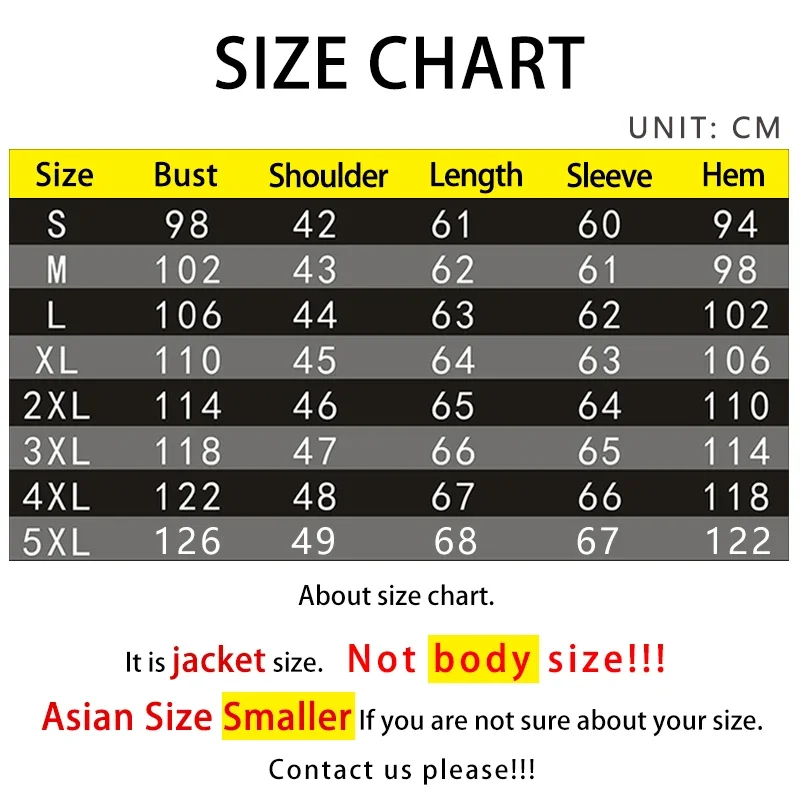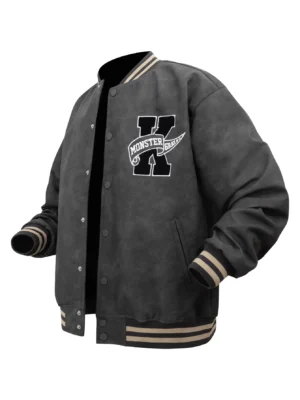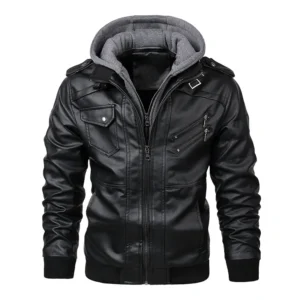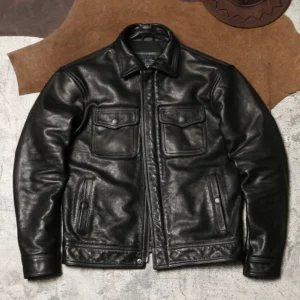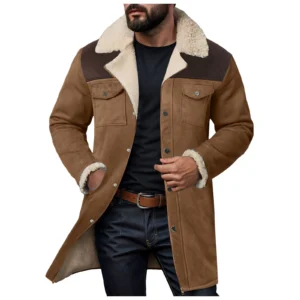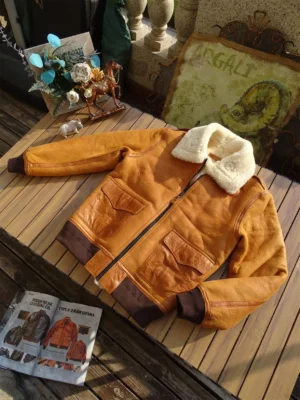Understanding Leather and Water Resistance
Leather has a natural relationship with water that many coat owners don’t fully understand. By nature, leather has some inherent water resistance, but it’s far from being completely waterproof. This distinction is important because expecting your leather coat to repel heavy rain without proper treatment sets unrealistic expectations.
Untreated leather is surprisingly vulnerable to water damage. When exposed to moisture, leather can develop:
- Water stains and spots that permanently alter appearance
- Warping and distortion that changes the coat’s fit
- Cracking and structural damage once it dries
- Mold or mildew growth if not dried properly
There’s an essential difference between “waterproof” and “water-resistant” when discussing leather goods. True waterproofing creates an impermeable barrier that prevents any water penetration, while water resistance merely slows water absorption. With proper treatment, leather coats become highly water-resistant but rarely completely waterproof.
The benefits of waterproofing treatments extend well beyond rain protection. Comprehensive leather coat care and maintenance significantly increases your garment’s lifespan, with properly treated leather coats typically lasting 5-10 years longer than untreated ones. Treatment also maintains the coat’s appearance and prevents many common stains beyond just water damage.
When leather fibers absorb water, they swell and then contract upon drying, weakening the material over time. This cycle of expansion and contraction breaks down leather’s natural structure, making waterproofing not just about appearance but about preserving the integrity of your investment.
Identifying Your Leather Type and Its Needs
Before applying any waterproofing treatment, identifying your leather type is crucial. Different leathers require specific approaches to achieve optimal water resistance without damaging the material.
Common leather types used in coats include:
- Full-grain leather: The highest quality and most durable leather type with natural water resistance, showing the animal’s original grain and developing a beautiful patina over time.
- Top-grain leather: Slightly sanded to remove imperfections, offering a good balance between durability and softness, with moderate natural water resistance.
- Corrected-grain leather: More heavily processed with a polymer surface coating, providing a uniform appearance and sometimes increased initial water resistance.
- Suede: Created from the inner split of the hide with a soft, napped surface that is highly absorbent and most vulnerable to water damage.
- Nubuck: Top-grain leather that’s been sanded or buffed to create a velvet-like surface, more delicate and absorbent than smooth leathers.
To identify your coat’s leather type, examine its texture, flexibility, and surface appearance. Check the manufacturer’s label or documentation, as this often specifies the leather type and recommended care methods. The diverse collection of men’s leather coats shows the variety of finishes and types available, each requiring specific care.
| Leather Type | Texture | Water Resistance | Waterproofing Considerations |
|---|---|---|---|
| Full-grain | Natural, may have visible marks | Moderate | Accepts most treatments well |
| Top-grain | Smooth, consistent | Moderate | Responds well to most treatments |
| Corrected-grain | Very uniform, may feel less natural | Moderate to Good | Avoid heavy waxes that may not penetrate |
| Suede | Soft, fuzzy, napped surface | Poor | Requires specialized spray treatments |
| Nubuck | Short nap, velvety feel | Poor to Fair | Needs specific nubuck protectors |
Understanding your leather’s natural properties allows you to select appropriate waterproofing products that enhance rather than damage its appearance and longevity.
Essential Preparation: Before You Waterproof
Proper preparation is the foundation of successful leather waterproofing. Skipping these crucial first steps can lead to poor results or even damage to your coat.
Start by thoroughly cleaning your leather coat to remove any dirt, dust, or residue that could interfere with the waterproofing treatment. Effective leather coat cleaning at home ensures the waterproofing product can penetrate evenly and bond properly with the leather.
Follow these preparation steps for best results:
Gather necessary supplies:
* Soft, clean cloths (microfiber works well)
* Leather-specific cleaner appropriate for your leather type
* Soft brush for suede or nubuck
* Clean, dry area to work
* Good ventilationClean the coat thoroughly:
* Remove surface dust with a soft cloth
* Apply an appropriate leather cleaner with gentle circular motions
* Pay special attention to stained areas or spots
* Allow the coat to dry completely (typically 24 hours)Perform a patch test:
* Select an inconspicuous area (inside collar or inner pocket)
* Apply a small amount of your waterproofing product
* Wait for the manufacturer’s recommended drying time
* Check for adverse reactions like discoloration or texture changesPrepare your workspace:
* Choose a well-ventilated area
* Lay down protective covering
* Ensure good lighting to spot any uneven application
* Have all materials within reach
Never apply waterproofing products to damp leather, as trapped moisture can lead to mold or mildew growth. Complete drying may take 24-48 hours depending on humidity levels and leather thickness.
Watch for warning signs during patch testing such as darkening beyond the expected level, stiffening of the leather, or any sticky residue that doesn’t absorb properly. These indicators suggest you should try a different product.
Waterproofing Products: Types, Benefits, and Limitations
Selecting the right waterproofing product for your leather coat requires understanding the strengths and limitations of each option. The market offers several distinct categories of waterproofing agents, each with specific applications and effects.
Understanding various types of leather cleaners for coats provides context for how waterproofing products interact with different leather care regimens. Many waterproofing products also include cleaning or conditioning properties that affect your overall care routine.
| Product Type | Best For | Pros | Cons | Impact on Appearance |
|---|---|---|---|---|
| Waxes (beeswax, mink oil) | Heavy-duty protection | Excellent water repellency, conditioning | Can darken leather, affects breathability | May add slight sheen |
| Sprays (silicone, acrylic) | Convenience, delicate leathers | Easy application, maintains appearance | Requires frequent reapplication | Minimal change |
| Creams & Oils | Dry/older leather | Deep conditioning, good water resistance | May significantly darken leather | Enhances natural patina |
Wax-Based Products: Products like beeswax, Sno-Seal, and mink oil provide robust water protection by creating a physical barrier on the leather’s surface. They excel at protecting leather in harsh conditions but can darken the material and reduce breathability. Best for work coats or outdoor use where maximum protection matters more than maintaining the original appearance.
Spray Waterproofing: Silicone and acrylic-based sprays offer convenient application and minimal impact on leather appearance. They create an invisible barrier that repels water while allowing the leather to breathe. Ideal for dress coats or when preserving the original color and texture is essential. However, they typically require more frequent reapplication than waxes or oils.
Cream and Oil Treatments: Products like mink oil cream, Neatsfoot oil, and leather honey penetrate deeply to condition while providing good water resistance. These are excellent for restoring older leather but can significantly darken most leathers. Best for aged leather that needs revitalization along with water protection.
When selecting a product, consider these additional factors:
* Choose products free from petroleum distillates for better leather longevity
* Look for pH-balanced formulas that won’t disrupt leather’s natural chemistry
* Consider silicone-free options if you’ll need to re-dye or refinish your coat in the future
* For eco-conscious choices, seek products with natural ingredients like beeswax and plant-based oils
The best waterproofing approach often combines products—for example, using a conditioning cream followed by a spray protectant for both nourishment and water resistance.
Application Techniques for Maximum Protection
Proper application technique is just as important as choosing the right waterproofing product. Following methodical application procedures ensures even coverage and maximum effectiveness without damaging your leather coat.
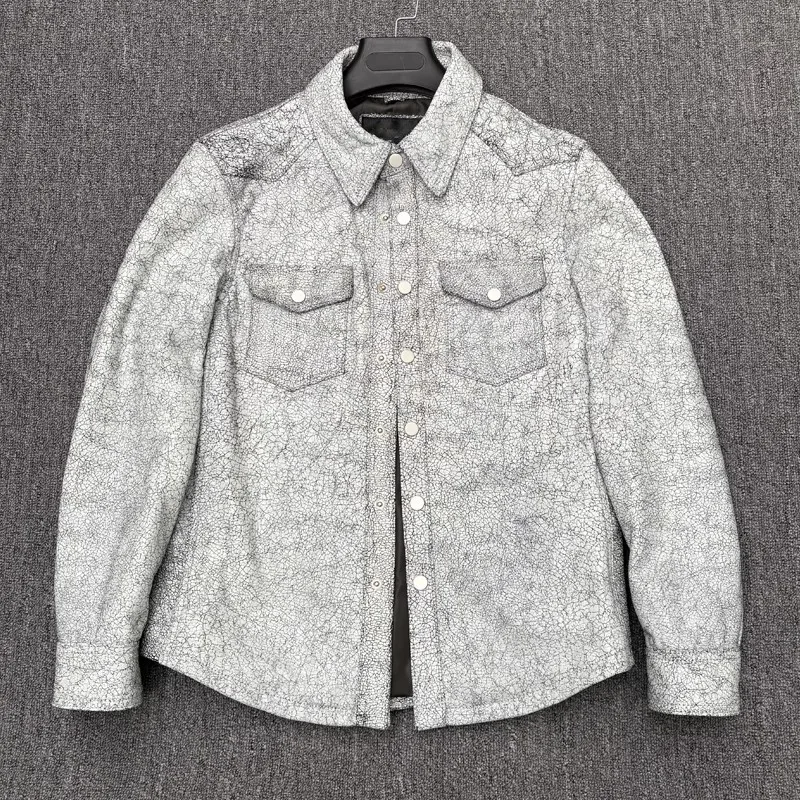
General principles for effective application include working in a well-ventilated area, applying products at room temperature, and using the right tools for each product type. Patience is crucial—rushing through application often leads to uneven protection and wasted product.
For Wax-Based Products:
1. Use a clean cloth or your fingertips to scoop a small amount of wax
2. Warm the wax between your hands until it becomes pliable
3. Apply in small circular motions, working on one section at a time
4. Use gentle pressure to work the wax into the leather
5. Pay extra attention to seams and creases where water can penetrate
6. Allow to absorb for 15-20 minutes
7. Buff gently with a clean cloth to remove excess
For Spray Protectants:
1. Shake the can thoroughly before use
2. Hold the spray 6-8 inches from the leather surface
3. Apply in light, even strokes moving side to side
4. Avoid oversaturation by using multiple light coats rather than one heavy application
5. Allow each coat to dry for 15-30 minutes before applying another
6. Ensure proper ventilation during and after application
For Creams and Oils:
1. Apply a small amount to a soft cloth
2. Work into the leather using small circular motions
3. Start with a thin layer and add more as needed
4. Focus on absorption rather than coverage—the leather should drink it in
5. Allow 1-2 hours for initial absorption
6. Wipe away any excess product that hasn’t absorbed
7. Allow to cure completely (typically 24 hours) before wearing
Special attention areas include seams, folds, and high-wear zones like cuffs and collars, which need thorough protection. Many owners of black leather coats find that these areas need slightly more product application than flat surfaces for consistent protection.
Common application mistakes include:
* Over-applying product, which can lead to sticky residue and attract dirt
* Uneven coverage, creating vulnerable spots for water penetration
* Rushing the drying/curing process, which prevents proper bonding
* Neglecting edges and seams, which are often the first entry points for moisture
Proper drying and curing are essential—allow the treated coat to hang in a well-ventilated area away from direct heat or sunlight for at least 24 hours before wearing.
Layering Waterproofing for Enhanced Protection
For leather coats that face severe weather conditions or require exceptional water resistance, layering different waterproofing products can provide superior protection. This advanced technique combines the benefits of different product types for a more comprehensive barrier against moisture.
The key to successful layering is understanding product compatibility and proper sequencing. Begin with products that penetrate deeply and follow with those that create surface barriers. This approach provides both internal conditioning and external protection.
Effective layering combinations include:
* Leather conditioner followed by wax-based waterproofing
* Oil treatment followed by silicone spray
* Cream application followed by acrylic-based protector
When layering products for leather jacket protection, timing between applications becomes critical. Allow each product to fully absorb and cure before applying the next layer—typically 24-48 hours between treatments.
For suede and nubuck, specialized layering might include:
* Nubuck-specific conditioner followed by a specialized suede protector spray
* Multiple light applications of spray protectant with drying time between coats
Warning signs of over-treatment include:
* Tacky or sticky surface that attracts dust and lint
* Uneven sheen or blotchy appearance
* Leather that feels stiff or plastic-like
* Product buildup visible in seams or creases
The layering approach requires patience but rewards you with significantly enhanced protection that maintains better resilience during prolonged exposure to wet conditions or frequent wear.
Maintaining Water Resistance Over Time
Waterproofing your leather coat is not a one-time effort but an ongoing aspect of leather care. The protective barrier created by waterproofing products gradually diminishes with wear, exposure to elements, and normal use.
Recognizing when your coat’s water resistance is fading is the first step in proper maintenance. The most reliable indicator is how water behaves on the surface—on well-protected leather, water should bead up and roll off. When water begins to soak in rather than bead, it’s time to reapply waterproofing treatment.
Recommended reapplication schedules vary based on usage patterns:
* Heavy use (daily wear in variable weather): Every 1-3 months
* Moderate use (regular wear in mostly dry conditions): Every 4-6 months
* Light use (occasional wear): Every 6-12 months
* Seasonal use: At the beginning of each wearing season
Long-term leather coat care requires attention to storage conditions when not in use. Store your coat:
* On a padded hanger to maintain shape
* In a breathable garment bag (never plastic)
* Away from direct sunlight and heat sources
* In a climate-controlled environment when possible
* With cedar blocks to absorb humidity and deter pests
Regular maintenance between full waterproofing treatments includes:
* Wiping down your coat after exposure to moisture
* Brushing suede or nubuck regularly to maintain nap
* Spot-cleaning stains promptly before they set
* Light conditioning of any areas that seem dry or stiff
This proactive maintenance approach extends the effectiveness of your waterproofing treatments and reduces the frequency of full reapplications needed.
Mens Leather Coat, Mens Long Leather Coat
Price range: $225.22 through $235.58 Select options This product has multiple variants. The options may be chosen on the product pageMens Black Leather Coat, Mens Leather Coat
Price range: $181.52 through $197.20 Select options This product has multiple variants. The options may be chosen on the product pageMens Brown Leather Coat, Mens Leather Coat
$846.94 Select options This product has multiple variants. The options may be chosen on the product pageMens Shearling Coat, Mens Sheepskin Coat
$888.08 Select options This product has multiple variants. The options may be chosen on the product page- Price range: $96.28 through $130.88 Select options This product has multiple variants. The options may be chosen on the product page
Mens Shearling Coat, Mens Sheepskin Coat
$2,257.19 Select options This product has multiple variants. The options may be chosen on the product page
Emergency Care: When Your Waterproofed Coat Gets Soaked
Even the best waterproofing can’t guarantee complete protection against downpours or unexpected soaking. Knowing how to handle your leather coat after significant water exposure can prevent lasting damage and preserve both its appearance and waterproofing treatment.
If your leather coat gets thoroughly wet, follow these emergency care steps:
Act quickly – Don’t let a wet coat sit in a heap, which can cause uneven drying and water spotting.
Gently blot excess water – Use a clean, absorbent cloth to blot (never rub) moisture from the surface.
Reshape while damp – Smooth out wrinkles and reshape the coat to its proper form while still pliable.
Air dry properly – Hang the coat on a padded hanger in a well-ventilated area at room temperature.
Avoid direct heat – Never use hairdryers, heaters, or direct sunlight, which can cause leather to crack or warp.
Allow complete drying – Let the coat dry naturally for 24-48 hours, turning occasionally for even drying.
Assess the damage – Once dry, check for water spots, stiffness, or other changes in texture or appearance.
Recondition as needed – Apply leather conditioner to restore moisture and suppleness to the leather.
Reapply waterproofing – Once fully conditioned and dry, reapply your waterproofing treatment as the soaking likely compromised the existing protection.
For water spots that develop despite quick action, try gently dampening the entire affected area and allowing it to dry evenly. For more severe water damage, professional leather treatment may be necessary to restore the coat’s appearance and texture.
Troubleshooting Common Waterproofing Issues
Even with careful application, waterproofing treatments can sometimes result in unexpected issues. Addressing these problems promptly can restore your leather coat’s appearance and protection.
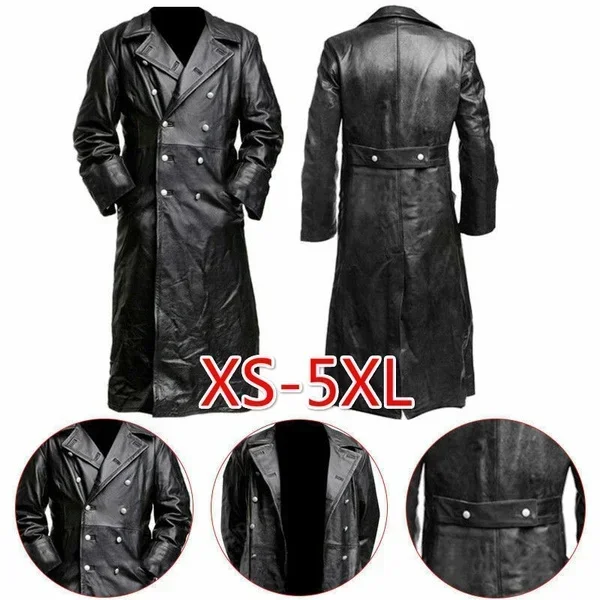
Q: My leather coat became much darker after waterproofing. Can I restore its original color?
A: Some darkening is normal with oil and wax-based products. For excessive darkening:
– Allow full curing time (3-7 days) as some products lighten slightly as they dry
– Gently buff with a clean, dry cloth to remove excess product
– For severe cases, a leather professional can apply specialized lightening techniques
– In the future, test products on an inconspicuous area first or choose silicone-based sprays that cause minimal color change
Q: The waterproofing product left a white residue on my leather. How can I fix this?
A: White residue typically indicates excess product that hasn’t been absorbed:
– Warm the leather slightly with a hairdryer on low setting (8-10 inches away)
– Gently work the product in with a clean cloth using circular motions
– For wax residue, try light buffing with a soft brush
– For persistent residue, a minimal amount of leather cleaner can help remove buildup
Q: My leather coat feels stiff and uncomfortable after waterproofing. What went wrong?
A: Stiffness often results from over-application or using the wrong product:
– Apply a quality leather conditioner to restore flexibility
– Gently flex the leather to help soften it
– Oil your leather jacket with a small amount of leather-specific oil can help restore suppleness
– Wear the coat for short periods to help it conform to your body again
Q: I applied waterproofing unevenly, and now my coat looks blotchy. How can I fix this?
A: Uneven application can often be remedied with patience and careful reapplication:
– For oil or wax treatments, lightly warm the entire surface with a hairdryer
– Apply a thin layer of the same product across the entire coat
– Focus on evening out the coverage rather than adding more product
– Buff thoroughly once dry to create consistent appearance
For persistent issues that don’t respond to home remedies, consult a professional leather care specialist, particularly for valuable or delicate coats.
Special Considerations for Different Leather Finishes
Different leather finishes require specialized approaches to waterproofing. What works perfectly for smooth leather might damage suede or alter the appearance of a distressed finish. Understanding these differences ensures effective protection without compromising your coat’s unique characteristics.
Suede and Nubuck:
– Avoid wax or oil-based products, which will flatten the nap and significantly darken the material
– Use only sprays specifically formulated for suede/nubuck
– Apply multiple light coats rather than one heavy application
– Use a suede brush before and after treatment to maintain the nap
– Consider specialized stain repellers designed specifically for these delicate finishes
Painted or Dyed Leather:
– Test products in an inconspicuous area to ensure they won’t affect the dye
– Choose silicone-based sprays which typically have minimal interaction with dyes
– Avoid heavy oils that might cause dyes to bleed or colors to shift
– For hand-painted designs, consider professional treatment to preserve the artwork
Antiqued or Distressed Leather:
– Understand that the distressed appearance may change with waterproofing
– Consider whether maintaining the exact distressed look or achieving water resistance is your priority
– Use products that enhance rather than mask the vintage appearance
– Light application of wax can actually enhance the character of distressed finishes
Owners of brown leather coats often need to pay special attention to color consistency, as brown leather can show uneven waterproofing more visibly than black leather. For these coats:
– Apply products with exceptional care for even coverage
– Consider slightly darker waterproofing products that complement the brown tones
– Use natural light to check for consistency during application
Exotic or Specialty Leathers:
– Research the specific care requirements for your exotic leather type
– Consider professional treatment for valuable or rare leather types
– Use only products explicitly stated as safe for your specific exotic leather
– Apply with extra caution, as exotic leathers often have unique porosity and absorption patterns
Professional Waterproofing: When to Seek Expert Help
While many leather waterproofing tasks can be handled at home, certain situations call for professional expertise. Knowing when to DIY and when to consult an expert can save your valuable leather coat from damage and extend its lifespan.
Consider professional waterproofing services in these scenarios:
* Valuable or vintage leather coats with historical or significant monetary value
* Exotic or unusual leather types that require specialized knowledge
* Severely damaged leather needing restoration before waterproofing
* Highly complex leather garments with multiple types of leather, extensive hardware, or delicate details
Specialized items like sheepskin coats often benefit from professional treatment due to their unique properties and the careful balance needed between treating the leather exterior and preserving the wool interior.
When seeking professional leather care services:
* Ask specifically about their experience with your leather type
* Request before/after examples of similar items they’ve treated
* Inquire about the specific products and techniques they use
* Discuss any special concerns or requirements you have
* Get a detailed estimate that includes timeline and guarantee of work
Professional waterproofing typically costs between $50-150 depending on coat size, condition, and leather type. While this represents a significant investment, it can be worthwhile for valuable coats or those with special requirements.
The cost-benefit analysis should consider:
* The coat’s value (both monetary and sentimental)
* Your comfort level with DIY leather treatment
* The complexity of the waterproofing needed
* The importance of achieving professional-level results
For everyday leather coats in good condition, DIY approaches are often sufficient, while investment pieces may warrant professional attention.
Effective Waterproofing of Leather Accessories
The same principles that protect your leather coat can be applied to your entire leather collection. Creating a coordinated waterproofing regimen for all your leather items ensures consistent protection and appearance.
Adapting coat waterproofing techniques for smaller accessories requires some modifications:
- For gloves and small items:
- Use less product than you would for a coat
- Pay careful attention to seams and stress points
- Apply with a small cloth or cotton swab for precision
Focus on high-contact areas like fingertips and palms
For bags and larger accessories:
- Empty completely before treatment
- Address high-wear areas like bases and handles with extra care
- Use masking tape to protect hardware and metal fixtures
- Consider the interior lining when selecting products
Allow longer drying time for thicker leathers
For hats and shaped items:
- Use forms or stuffing to maintain shape during treatment
- Apply products more lightly to prevent oversaturation
- Pay special attention to creases and folds
Coordinated care creates a unified appearance when wearing matching leather items. Using the same or complementary products across your leather collection ensures consistent sheen, texture, and color depth.
For storing waterproofed accessories:
* Use breathable dust bags rather than plastic
* Stuff bags and gloves with acid-free tissue to maintain shape
* Store hats on proper forms
* Keep small items separate to prevent color transfer or imprints
This holistic approach to leather care creates a comprehensive protection system for your entire leather wardrobe.
Natural vs. Synthetic Waterproofing: Environmental Considerations
As environmental awareness grows, many leather enthusiasts are considering the ecological impact of their waterproofing choices. Both natural and synthetic options offer distinct advantages and limitations.
Natural waterproofing ingredients include:
* Beeswax – biodegradable and renewable, provides excellent water resistance
* Lanolin – derived from sheep’s wool, offers good conditioning and moderate protection
* Plant-based oils (like coconut or olive oil) – eco-friendly but offer limited water resistance
* Neatsfoot oil – animal-derived but highly effective for leather conditioning and moderate waterproofing
Synthetic waterproofing technologies include:
* Silicone polymers – effective water repellents with minimal appearance change
* Fluoropolymers – highly effective but contain chemicals of environmental concern
* Acrylic copolymers – good balance of effectiveness and reduced environmental impact
* PVA-based products – water-soluble until cured, then provide good protection
When mastering casual black leather jacket care with environmental sensitivity, consider these factors:
* Product longevity – longer-lasting treatments require less frequent reapplication
* Packaging sustainability – concentrate on products with minimal or recyclable packaging
* Biodegradability of the treatment once it’s worn off
* Manufacturing processes and their environmental impact
Simple DIY natural waterproofing can be created by melting together:
* 1 part beeswax
* 2 parts pure lanolin
* Small amount of vitamin E oil (as a preservative)
Heat gently until combined, then apply while warm. This mixture provides good water resistance though it will darken leather somewhat and requires more frequent reapplication than synthetic alternatives.
The most environmentally conscious approach balances effectiveness with sustainability, considering both the immediate environmental impact of the product and the long-term benefit of extending the life of leather goods, reducing the need for replacement.
Frequently Asked Questions About Leather Waterproofing
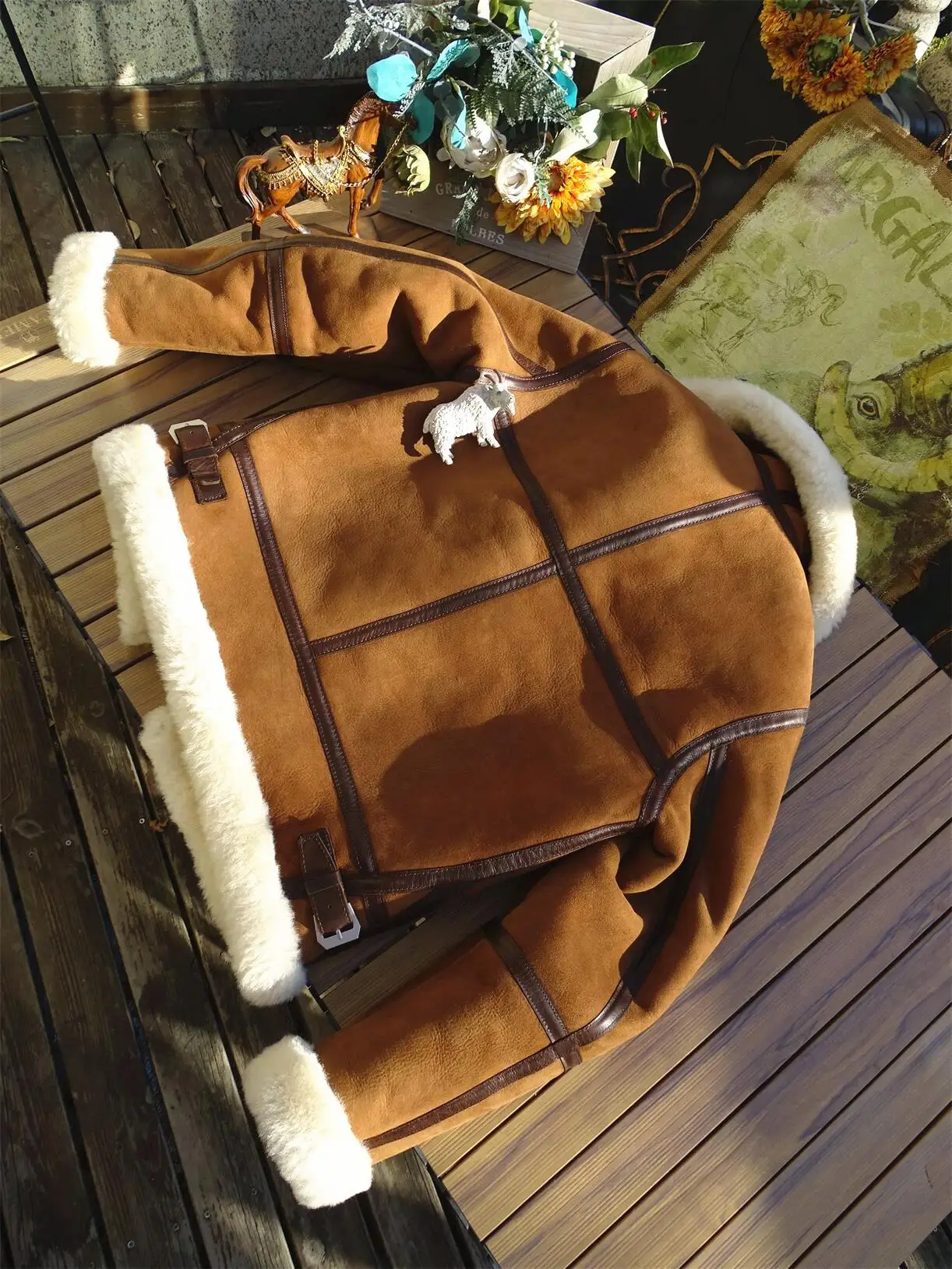
Will waterproofing make my leather coat feel different?
Most quality waterproofing treatments will cause subtle changes to leather’s feel. Wax and oil treatments typically make leather slightly softer and more supple, while adding a bit more weight. Spray treatments generally have minimal impact on texture but may add a slight sheen. The key is proper application—over-application is what typically causes unwanted changes in feel and appearance.
Can leather ever be truly 100% waterproof?
Leather can achieve high levels of water resistance, but genuine leather is never completely waterproof due to its natural, porous structure. Even with excellent treatment, prolonged exposure to heavy rain will eventually allow some moisture penetration. The goal of waterproofing is to provide significant protection against brief exposure and light precipitation while maintaining leather’s breathability and natural properties.
How often should I reapply waterproofing treatments?
Reapplication frequency depends on wear patterns, exposure conditions, and the product used. Typically, spray treatments need reapplication every 3-4 weeks with regular wear, while wax and oil treatments can last 2-3 months or longer. One of the most effective approaches to preventing leather coat cracks and maintaining water resistance is regular conditioning with reapplication of waterproofing before the previous treatment has completely worn off.
Can I use leather waterproofing products on synthetic leather?
Many leather waterproofing products, especially oils and waxes, are not suitable for synthetic leather and can damage it. Synthetic leather requires products specifically formulated for it. Look for vinyl or faux leather protectors, which typically use different chemical compounds that bond properly with synthetic materials without causing breakdown or peeling.
Is it safe to wear my treated coat in heavy rain?
Even well-treated leather coats should avoid prolonged exposure to heavy rain. While proper waterproofing will protect against light rain and brief exposure, leather fundamentally remains an absorbent natural material. For heavy downpours, consider a dedicated raincoat over your leather coat or carrying an umbrella to provide additional protection.
Will waterproofing prevent all stains?
Waterproofing significantly improves resistance to water-based stains but offers limited protection against oil-based stains, as most waterproofing treatments repel water but not oils. For comprehensive stain protection, look for products specifically labeled as both water and stain repellent. Remember that prompt cleaning of any spill, regardless of your waterproofing treatment, remains the best defense against permanent staining.

